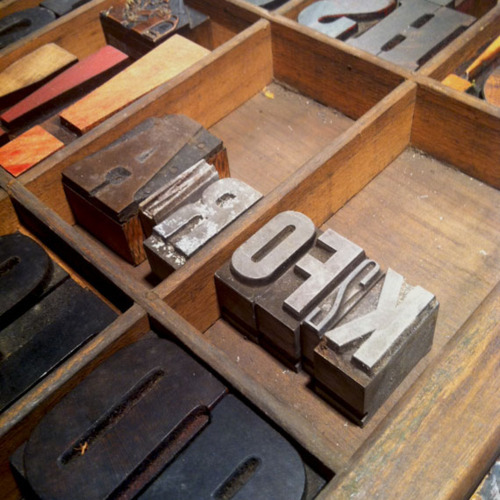Thanks to Karen Sullivan from The Charlotte Observer for this lovely article about k2forma and our letterpress.

Kelly Koeppel could have been content with a graphic design business that lets her work for national retailers such as Polo Ralph Lauren, Talbots and BCBG.
Her business, k2forma, thrives on computer- and web-based systems and applications, so not many would have predicted she would diversify her company with technology from a century ago.
Yet, a few steps away from her 27-inch Apple computer screen and her iPhone4 is a manual letterpress printer, made somewhere between 1875 and 1975. The design changed very little over the years.
The absence of modern automation is what drew her to the machine.
“This is about making stuff with your hands,” Koeppel, 36, said at her studio at Hart Witzen Gallery, in the North Davidson Street arts district.
Koeppel’s work with the letterpress printer is also an effort to keep the craft alive. She’s organizing a letterpress festival at the gallery, at 136 E. 36th St.
The Charlotte chapter of the American Institute of Graphic Artists will be a partner with k2forma for the event, Feb. 13-14.
Letterpress is one of the oldest printing processes. A reversed raised surface, wood blocks or metal, gets smeared with ink and pressed into a sheet of paper or some other surface to transfer an image or text.
Printers such as Koeppel’s are not always so easy to find. Used and restored models and supplies for them are usually sold over the Internet, from sites such as ebay, Briar Press and Craigslist.
Most commercial printers now use computer-generated images and designs.
Koeppel is interested in seeing the old-world method survive. The printer also gives her an additional tool for creative projects.
“There were a lot of things I couldn’t make, fun things like coasters,” she said. “I could design them all day, but I couldn’t produce them. It was too expensive.”
Too expensive until she found the Excelsior table top letterpress printer on the Web. She paid about $1,000 for the 5-by-8-foot version last November. That’s about an average price for the model, she said.
Unlike work on the computer, the letterpress calls on Koeppel to mix ink colors and, once the machine is set up, rely on brute force to press the image onto the paper or some other surface.
Koeppel uses the machine to make holiday cards, posters, stationery, business cards and coasters. She sells some of those online at a site for crafters called Etsy.
Many of the pieces she has made have embossed letters or images, which gives them texture that you can see and feel.
When using wood blocks, the printer can produce images that vary from one impression to the next.
Koeppel said she learns new techniques each time she uses the machine. She’s convinced it can help make her work more interesting.
She hopes to learn even more about techniques through workshops and lectures that will take place during the planned letterpress festival.
Koeppel also hopes to illustrate that, even in the digital age; letterpress printing is a treasure worth preserving.
“If you have a certain set of tools in your toolbox, you’re immediately going to go to those tools,” she said. “This opens up that toolkit.”

Recent Comments